How Nadeo plans to make ShootMania the number one eSports FPS
Building up a Storm.
Back in 2004, Florent Castelnerac was first introduced to the world of eSports by his friend Matthieu Dalon, founder of the Electronic Sports World Cup. He liked what he saw; 400 players assembled against the French fantasy backdrop of the Parc du Futuroscope, competing across the likes of Counter-Strike, Quake 3, Unreal Tournament and Need for Speed.
So Castelnerac went back to his studio, Nadeo, and went about tailoring a version of its game TrackMania for that competitive crowd. The result, TrackMania Nations, would go on to attract some 12 million registered users. And just two years after his first visit to the ESWC, in 2006, it ousted Need for Speed as the racer of choice and went on to become an eSports staple, a position it's maintained ever since. Six years further down the line, Castelnerac's out to do it all over again - only this time he's reaching for the big guns.
ShootMania: Storm, Nadeo's new project, is aiming to fill the void in an eSports scene that's currently without a first-person shooter to champion. Despite its recent makeover with Global Offensive, Counter-Strike's getting long in the tooth, while the likes of Halo 4 and Black Ops 2 come with the heavy baggage of two of gaming's biggest brands. ShootMania: Storm, however, has been built from the ground up to cater to the eSports crowd.
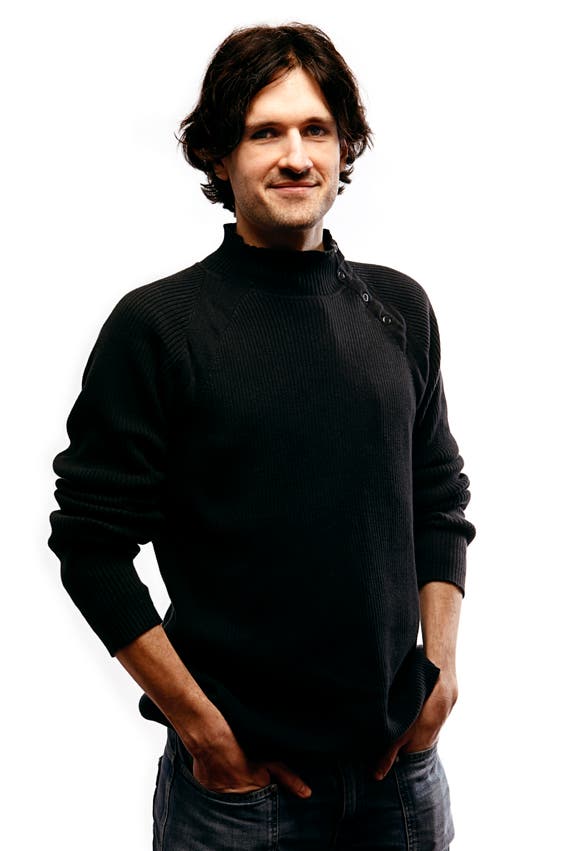
It is, in fact, anathema to the drab military aesthetic of Counter-Strike and Call of Duty - and it even manages to make Halo look dour in comparison. ShootMania's a colourful, quick-witted creation, and one that's instantly reminiscent of the long-departed golden age of multiplayer shooters such as Unreal Tournament.
It's also, not surprisingly, reminiscent of Nadeo's TrackMania, a game that turned its nose up at common conventions of the racing genre and created an experience that was brutally simple, fast-paced, tightly engineered and endearingly off-the-wall - all traits shared by its FPS stable-mate.
Like TrackMania, it's a game that, in the right hands, can look dazzlingly cool. There's no other racer that's quite as athletic as Nadeo's, with its loops, whirls and impossible jumps and, right now, there's no other shooter that's as athletic as ShootMania. The move-set's been tailored for showboating - in the new beta that's hitting next month, it's possible to pull off series of fleet-footed wall-jumps, adding to the grappling hooks that already exist within the game.
It is, like TrackMania, an incredibly simple game too: feats of athletics are pulled off by just pressing the right button and dipping into a stamina reserve. That's part of a streamlined process that filters through to the rest of ShootMania. Find yourself inside and your weapon will automatically switch out to a Nucleus, a glob of energy balls that sticks to objects before patiently waiting to explode.
Hold down that stamina button when inside and you'll run as opposed to jumping; look out of a window and you'll find yourself in possession of a laser rifle with scoped sights. In TrackMania, Nadeo's already managed to create one of the deepest, richest arcade experiences that works perfectly when using WASD keys alone, and now it's striving to conjure a shooter with equal complexity out of another hyper-reductive control set-up.
"I think that if FPS has a place to be as big as League of Legends, then we have a chance to take this place."
There's another game that it's reminiscent of, too - and it's in these parallels that ShootMania's potential strength is implied. With its ease of access, its free-to-play base and its unashamedly simple approach to what can be an achingly complex genre, comparisons have been made with League of Legends.
"We're hoping ShootMania becomes a major eSport," Castelnerac says in English that's as endearingly scruffy as his long dark hair. "Counter-Strike was number one for years, but some people ask if I'm worried if FPS genre can be strong again in eSport. I think that if FPS has a place to be as big as League of Legends, then we have a chance to take this place. From what I've seen so far, when I see a high level of ability in our games, I'm hooked in my chair."
That's the really interesting thing about ShootMania's athleticism - it's designed as much for its spectators as it is for its players. Watching Castelnerac pull off a series of wall-jumps to reach an otherwise unreachable ledge, or seeing another seasoned player fire off a perfectly placed laser shot as they rush through the parabola of a grapple-hook swing, it proves to be as much fun to watch as it is to play.
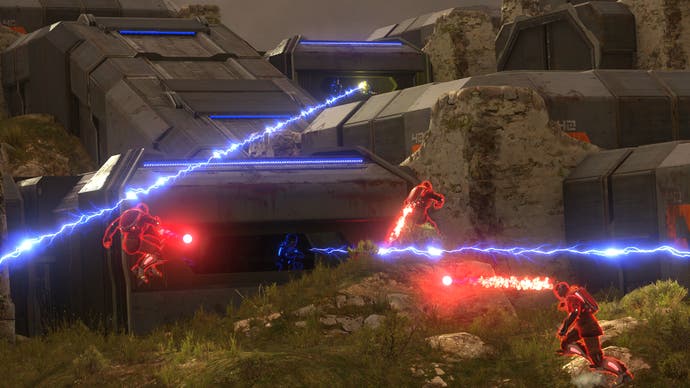
In fact, for the vast majority of people who experience ShootMania, it may well prove more fun to watch than to actually play - while amateurs can happily wheeze around a map like an overweight Sunday league player, it all comes into its own when played by pros. ShootMania's structured for pros and plebs alike, a point charismatically made by Castelnerac as he scribbles out a pyramid in Microsoft Paint.
At the top are the pro players, taking part in the official competitions, while just below there are the competitions arranged by the community. Below that are the players dabbling in the game for the first time via the free-to-play ShootMania package, and then, at the very foundation of Nadeo's vision, there are the spectators.
"Is that crazy?" asks Castelnerac. "Maybe not - more people listen to music than play instruments, more people watch football than play it." A fair few people watch video games, too - League of Legends' recent finals pulled in a viewership of some 8.2 million people online. It's a figure, of course, that Nadeo's got its eyes on.
"It's something we have to target," says Castelnerac. "But we cannot say we will be there. Many of us are positive. Our goal is to be bigger than League of Legends - I know it's crazy to say this. But let's say sponsors are more integrated, and people can follow their cities and have leagues they can follow on a weekly basis, let's say there are many things that means to make it bigger. But I will never say we will be bigger than League of Legends. It'd be fake."
"Steam would be the place to sell, but we designed ManiaPlanet as a place to stay."
ShootMania's future plans are interwoven with ManiaPlanet, Nadeo's bespoke platform in which TrackMania 2 Canyon launched last autumn. Its community-driven features form an integral part of both games' make-up, although its threadbare status upon its initial release raised questions as to why TrackMania 2 didn't simply launch on Steam.
"ManiaPlanet is one executable. It's like a platform," explains Castelnerac. "To put it on Steam would be like a platform in a platform. We have really two choices - either to go full Steam, or to go ManiaPlanet. If you do Steam, you do Steam cloud - we have a cloud service - you do Steam Workshop - and we have something like that."
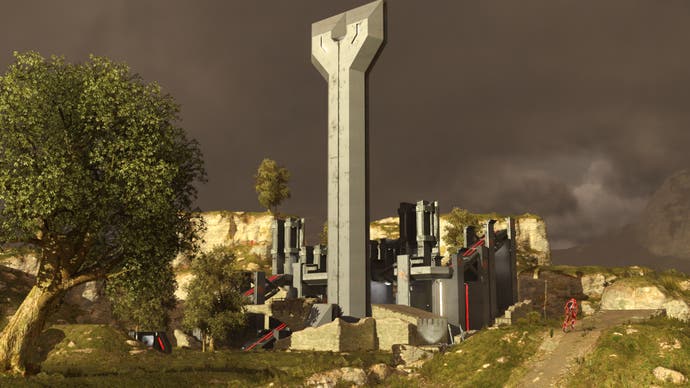
Such is Nadeo's dedication to ManiaPlanet that it's potentially sacrificed sales of its TrackMania sequel in pursuit of establishing a new, dedicated platform. "Steam would be the place to sell," admits Castelnerac. "But we designed ManiaPlanet as a place to stay. I don't think League of Legends will go Steam, I don't think StarCraft will go Steam. We're trying to make our own game operating system. It's different from Steam - it puts the creativity of the users at the core. I don't think we are better, but we are different."
ShootMania's serious about its future success, and its timing, if nothing else, is impeccable: at a time when eSports ascent is rising faster and faster, now's the perfect time to strike. "We're benefitting from League of Legends just by it being there," admits Casltelnerac. "There's the organisation, the shoutcasters. They want a share of this, and they see FPS as like a blue ocean, somewhere they can go. Today Counter-Strike is one place, and we can build on it somehow."
Can it go on to be the number one FPS on the eSports scene? With both Call of Duty and Halo both making moves on professional gaming with their latest, big-budget instalments, Nadeo's very much the plucky outsider - short on budget perhaps, but certainly not lacking in charisma. It will, in all likelihood, take a stroke of luck or good fortune to break ShootMania out of the small, Euro-centric circles that its current beta has attracted. But League of Legends has proven how simplicity can breed success - and that's a trait with which Nadeo has, in the past, excelled.
This article is based on a press trip to Nadeo in Paris. Ubisoft paid for travel and accommodation.
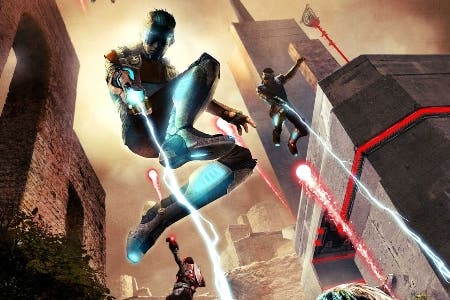

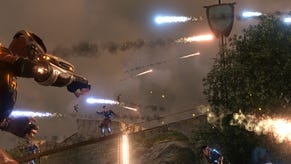

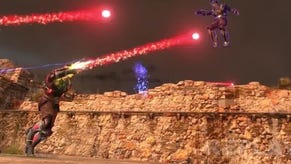

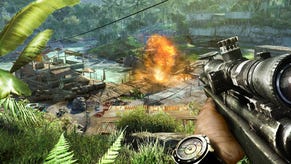
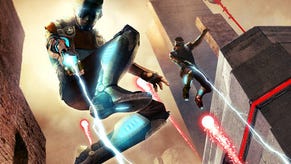
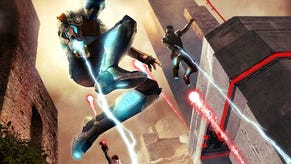



.png?width=291&height=164&fit=crop&quality=80&format=jpg&auto=webp)



